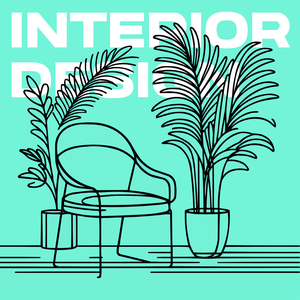The Enigma of Elegance: Finessing the Finishing Touches in Interior Design
Hello and welcome to another episode of "Interior Design for Beginners" – your guide to crafting beautiful spaces that speak to the heart. Today, we're diving into a topic that’s both a subtle art and a definitive science: finessing the finishing touches in interior design, under the opulent umbrella we like to call, "The Enigma of Elegance". It's all about how the smallest details can have the biggest impact, transforming good design into something truly extraordinary.
Imagine you’ve laid down the foundational elements of your space. The paint is dry, the furniture’s in place, the lighting is just right. But somehow, it still feels like there's something missing. This is where the magic of finessing those finishing touches comes into play. It’s akin to adding that final stroke of garnish to a culinary masterpiece or that last touch of mascara that brings an entire look together. In the world of interior design, these finishing touches include elements like artwork, decorative objects, throw pillows, area rugs, and the list goes on.
The beauty of these elements isn’t just in their appearance but in how they bridge the gap between a house and a home. Personal artifacts, for example, such as a vintage camera collection or heirloom tea sets, can tell a story about who you are, anchoring your space with identity and history. Other times, it’s the strategic placement of objects like books, candles, or planters that add warmth, personality, and life to a room.
We often overlook the power of these small details because they seem inconsequential at first glance. Yet, it’s precisely these elements that layer complexity, depth, and resonance to your space. They are the threads that weave the fabric of your home’s character and style together.
But how do you know if you’re overdoing it? Remember, elegance lies in simplicity and restraint. The secret is balance – striking the right harmony between filled space and open space. Too much clutter can overshadow your design, while too little can leave it feeling barren and impersonal. The goal is to evoke emotion, to make a space feel curated yet effortless.
Let’s talk about the emotional resonance of finishing touches. When you enter a room, it’s often the small, personal touches that draw you in and make you feel welcome. These details have the power to influence the mood and atmosphere of your space significantly. Think soft throw blankets that invite you to curl up on the sofa, an antique clock that chimes melodies from the past, or a carefully positioned mirror that reflects the natural light and adds a new dimension to the room.
Lastly, we mustn’t forget the transformative power of scent – often considered the finishing touch of all finishing touches. Whether it’s the subtle fragrance of fresh flowers, the earthy aroma of a scented candle, or the crispness of clean linens, the right scent can instantly lift the spirit of any space, imbuing it with character and warmth.
In summary, the finessing of finishing touches in interior design is not just about decorating for aesthetics; it’s about crafting spaces that resonate with our emotions, reflect our identities, and enhance our daily lives. Remember, elegance isn’t about opulence; it’s about how well everything comes together to tell a cohesive, compelling story.
That’s a wrap for today’s episode. We hope you’re feeling inspired to look at those "small" details with fresh eyes, realizing their mighty impact on the elegance of your space. Thank you for tuning in, and remember – in the world of interior design, the devil truly is in the details.
Brought to you by Room AI


